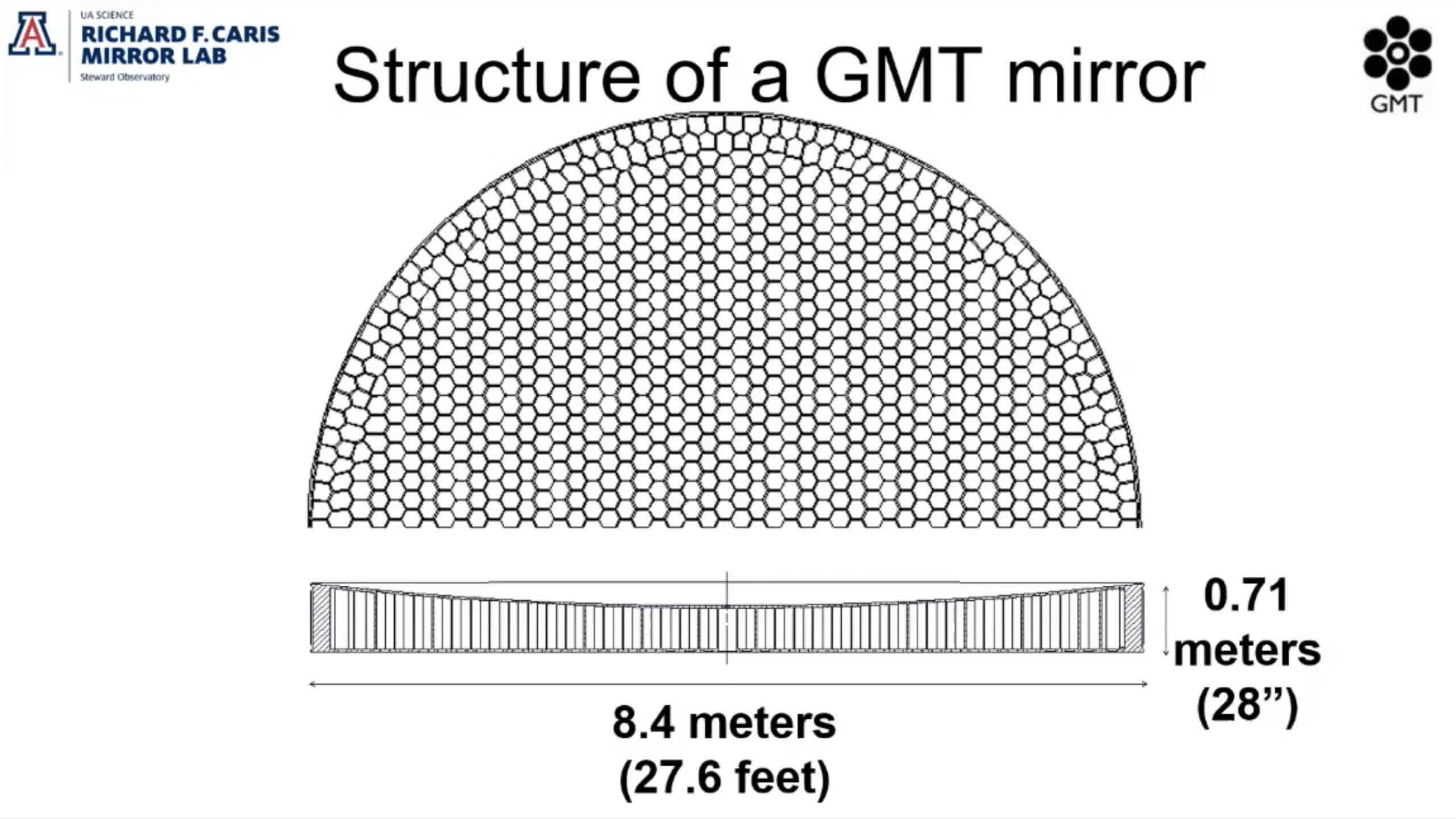In context: The Giant Magellan Telescope is set to be the world’s most powerful telescope when engineers complete its construction by the end of this decade. It will have 10 times the Hubble Space Telescope’s viewing power and four times the strength of the James Webb Space Telescope.
Even though the casting of the sixth massive mirror for the Giant Magellan Telescope (GMT) commenced about a week ago, it will still be another two months before it cools to room temperature. After that, it will take two years to polish and another two years to apply the finishing touches, including the 1,000-atom-thick reflective aluminum layer coating the front surface.
It is an excruciatingly long process carried out by the University of Arizona’s Richard F. Caris Mirror Lab. Even though the project started in 2005, only two mirrors have been completed and are waiting in storage. Mirror six and three others are in various stages of the production process. Although the GMT only requires seven mirrors for viewing, the lab will build an eighth as a spare to be swapped into the telescope whenever one of the others needs maintenance.
Part of the reason the production process is so long is that these are the biggest mirrors ever created. Each one is over 27 feet in diameter and more than two-feet thick. Despite their large size, the mirrors have a honeycomb-like structure that makes them 80-percent hollow and much lighter than solid mirrors. That said, each of the monolithic disks requires 20 tons of high-purity, low-expansion, borosilicate glass (called E6 glass). The honeycombing also provides the stiffness the mirrors need to resist flex as the telescope moves and to resist the effects of gravity.

Another factor that contributes to the long fabrication time is the polishing required. Both the front and the back of the mirror need polishing, but the reflective side has to be painstakingly accurate.
“Once cooled, the mirror will be polished for two years before reaching an optical surface precision of less than one-thousandth of the width of a human hair or five times smaller than a single coronavirus particle,” said the GMTO Corporation in a press release.
Even though two years seems like a long time to polish a mirror, it would take even longer if engineers had to grind the curvature out of a flat surface. To shave years off construction, the Richard F. Caris Mirror Lab built the world’s only spinning furnace. The glass is heated to 2,129 F while the mold rotates at five revolutions per minute. Centrifugal force pushes the glass to the edges of the mold and creates the rough parabolic curvature the mirror needs saving a lot of time (below).
The seventh mirror is scheduled to be cast sometime in 2023. In the late 2020s, all the mirrors will be transported to a port city, probably Houston. From there, they will be shipped through the Panama Canal, down the South Pacific Coast to Chile. By that time, the observatory, which is already under construction, will be ready to have the mirrors mounted. Scientists will not have to wait for all seven mirrors to be hooked up to start making observations. The GMT only needs four mirrors in place to function.
In addition to the giant telescope, the observatory will have dormitories, and full facilities once completed so scientists can live on-site. However, astronomers will have remote access to the location as well. The entire project should reach completion around 2030.
Source link






